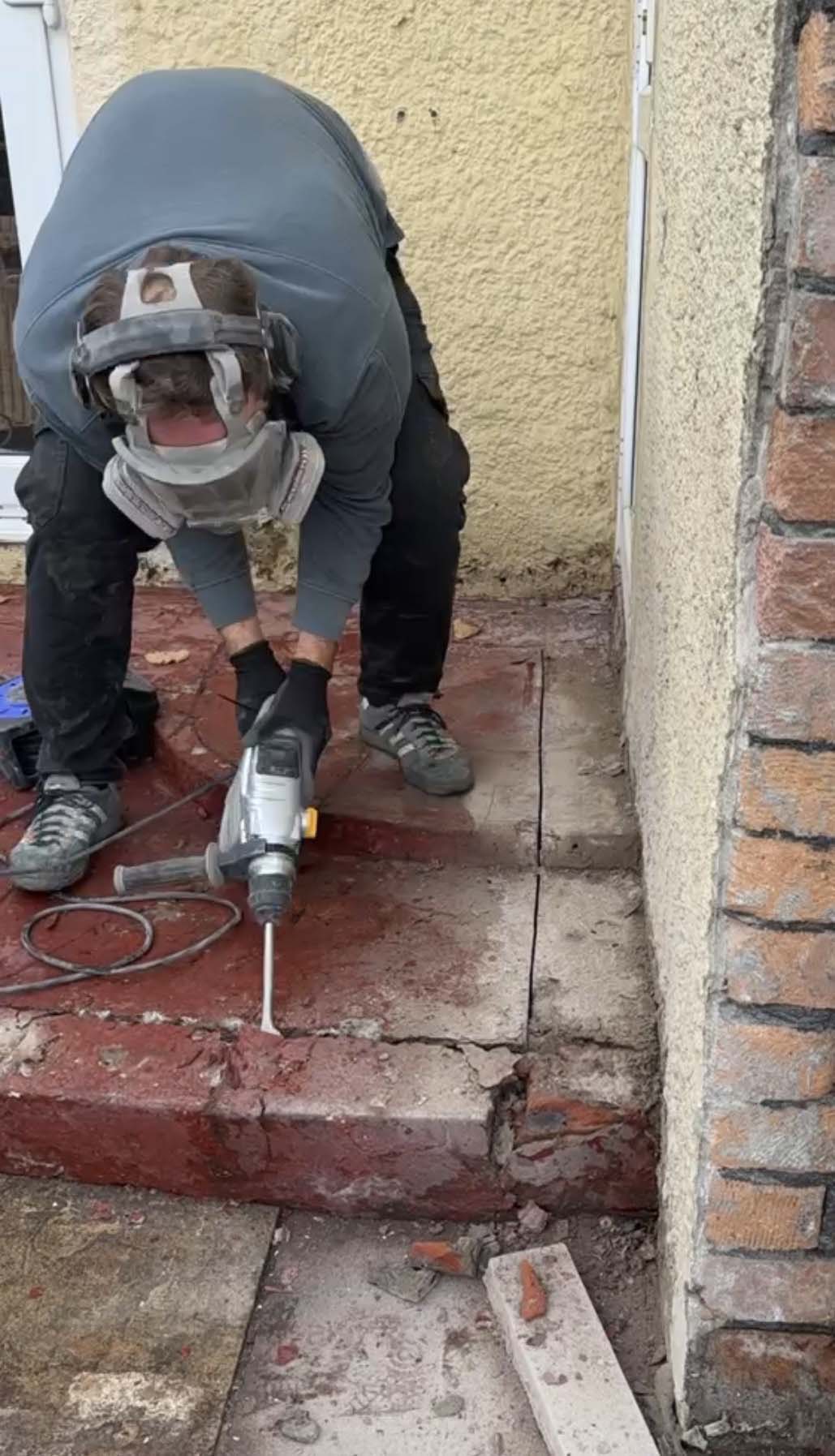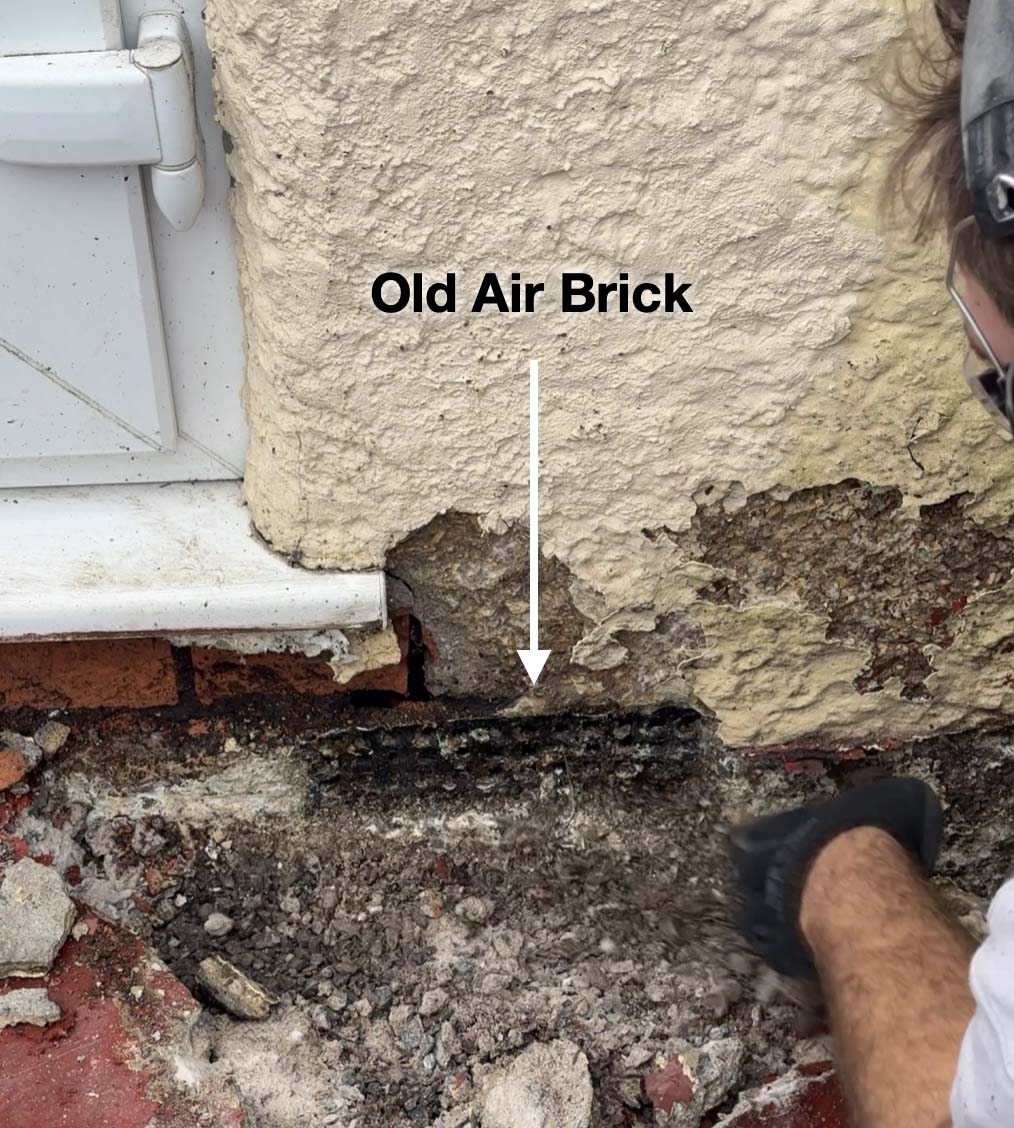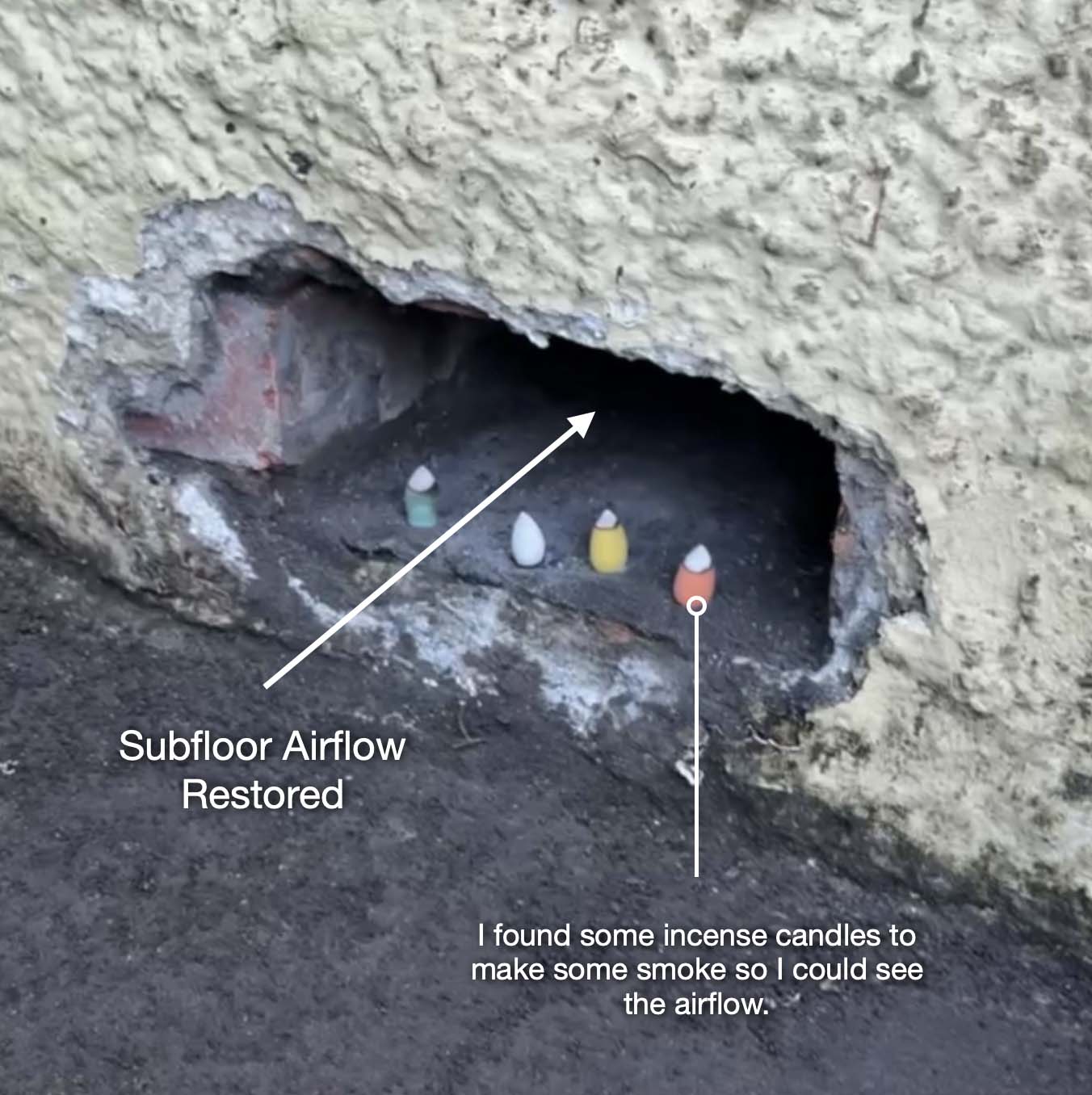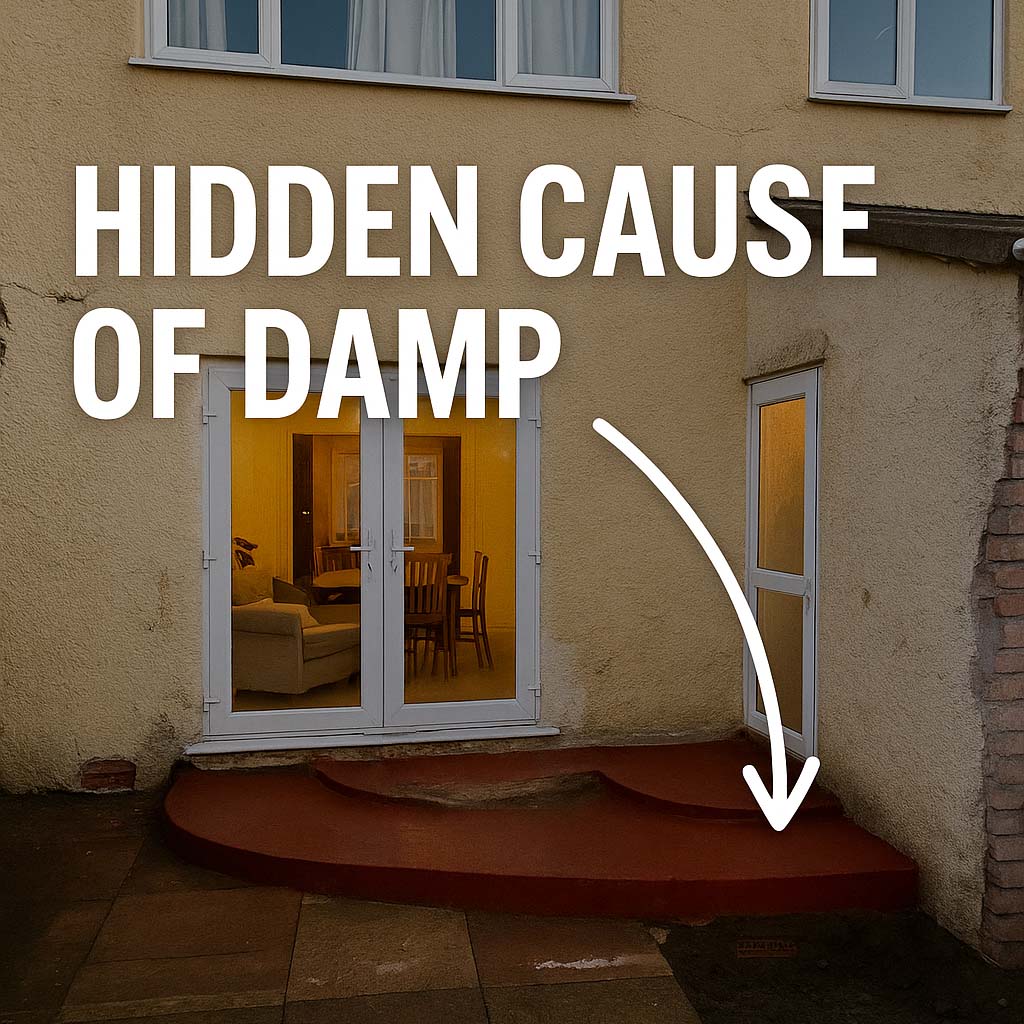The Mystery of the Damp Wall
For months I’d been staring at a damp patch on the back wall of my 1930s house, wondering what on earth was causing it. I’d read every article, watched every YouTube expert, and fallen deep into the forums where people argue about DPC levels like it’s a competitive sport.
Everyone says the same thing: damp is rarely caused by just one issue. It’s usually a mix of poor drainage, blocked airflow, and ground levels that have crept up over the decades, among so many other things. And in my case, that turned out to be painfully true.
 Decking, Concrete and Fifty Years of Trapped Moisture
Decking, Concrete and Fifty Years of Trapped Moisture
At first, I thought the culprit was the half-rotten decking leading out of the French doors. I suspected it was bridging the DPC and choking off the air bricks. But when I pried up the boards, I discovered something far worse: a concrete step.
Not just any step, a full-blown slab poured right up against the wall, like someone had decided to gift the house a lifetime supply of trapped rainwater. Instead of draining away, the rain pooled on the concrete and quietly funnelled down into the brickwork. I just stood there for a moment, stunned. This had probably been happening for half a century.
The fix was obvious: it had to go.
 Breaking Concrete (and Myself)
Breaking Concrete (and Myself)
What I’d imagined would be a quick, satisfying job turned into an all-day battle. The concrete was thicker than expected, with layers of rubble and hardcore packed beneath. My SDS drill got a proper workout, and by the end of it, so did my hands.

Breaking up the concrete steps using my trusty £50 Screwfix Titan SDS drill.
But when the final chunk cracked loose and I cleared the debris, I spotted them, the old air bricks. Hidden, clogged, forgotten. I started digging them out like I’d just unearthed treasure. It’s strange what gets you excited as a homeowner; some people dream of new kitchens, I get a thrill from unblocking ventilation.
 Testing the Airflow (DIY-Scientist Mode)
Testing the Airflow (DIY-Scientist Mode)
I wanted to see if the airflow had actually returned, so I raided a drawer and found some incense candles. I lit them inside and watched the smoke drift towards the newly exposed air bricks. Sure enough, the house was drawing air in. I grinned like an idiot. It was one of those tiny, nerdy victories that feel huge when you’re trying to outsmart damp.
 Of course, as I celebrated my smoky science experiment, I noticed something else: the render behind the concrete ran all the way down to the ground. A double whammy. Not only had the steps been trapping water, but the render had been wicking it straight back up into the wall. Brilliant.
Of course, as I celebrated my smoky science experiment, I noticed something else: the render behind the concrete ran all the way down to the ground. A double whammy. Not only had the steps been trapping water, but the render had been wicking it straight back up into the wall. Brilliant.
Still, with every chunk of concrete broken out, the wall looked healthier, and I felt like I’d done something genuinely worthwhile. There’s still a mountain of hardcore outside the back door waiting to be shifted, but that’s a problem for another day.
View this post on Instagram
What Comes Next
Next, I’ll be tackling the ground levels properly. The plan is to dig back all the earth and clay that’s sitting against the foundations, replace it with gravel, and fit an ACO drain so water has somewhere to go other than my living room wall.
This is just one part of a bigger mission, I’m slowly going around the house, analysing every detail that might be trapping moisture. Fixing damp isn’t about quick wins or miracle rods; it’s about understanding how your home breathes.
What I’ve Learnt (So Far)
- Don’t waste money on chemical DPCs or magic products; start by looking for the physical causes.
- Air bricks are there for a reason, check they’re actually doing their job.
- Keep render, paving, or soil below your DPC line.
- Fixing damp is a slow detective story, not a one-day renovation project.
A Bigger DIY Journey
This little victory is part of a much bigger project. I’m tackling the entire house myself, or at least as much as I can. The plan is to strip it right back, starting with the external render, then move on to the kitchen, and eventually every other corner that needs care. It’s a long process, done bit by bit, but there’s something deeply satisfying about learning each step and watching the house slowly come back to life.
More than anything, my goal is to show that you don’t need to be afraid of fixing things yourself. There’s a lot of fear around houses, that every problem will spiral into thousands of pounds and endless experts, but with patience, curiosity and a bit of research, you can take on far more than you think.
